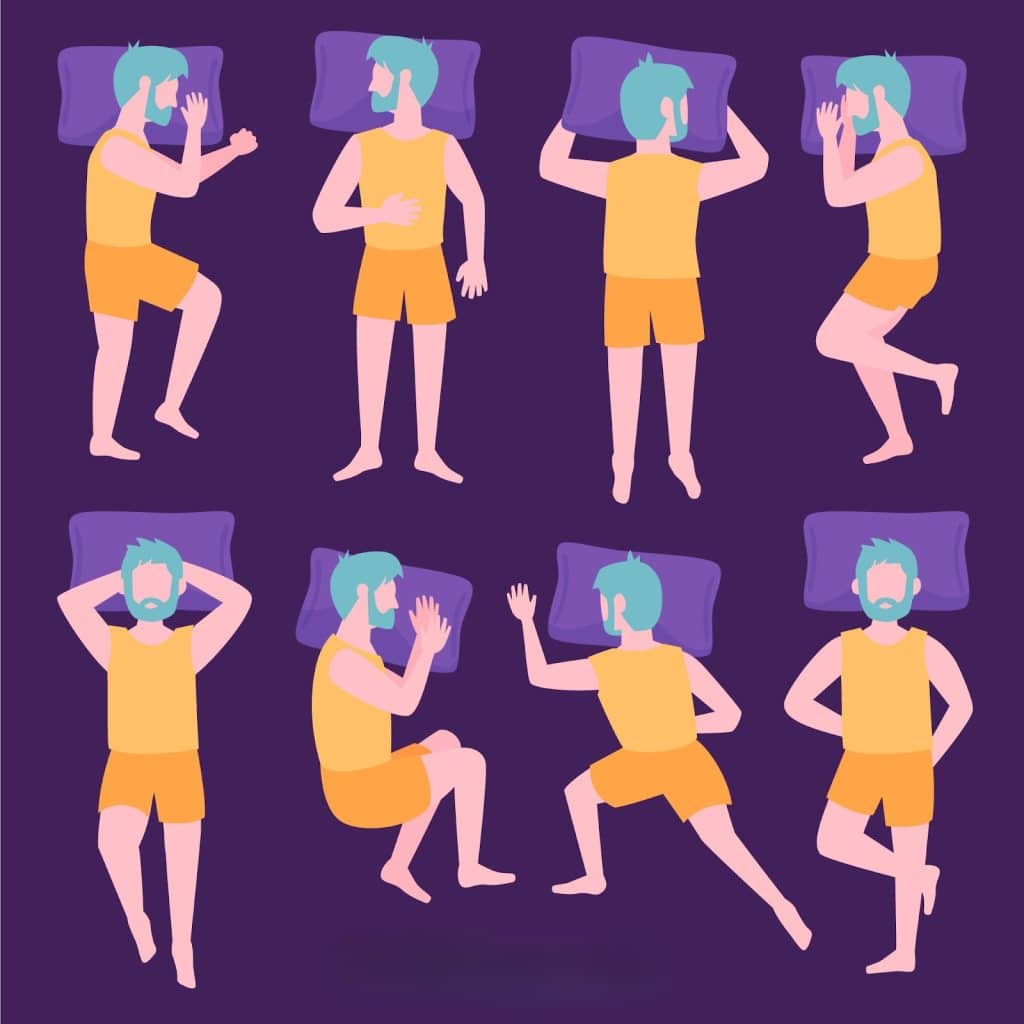How you sleep changes how you breathe—sometimes dramatically. A small shift in head angle or shoulder rotation can be the difference between quiet airflow and a night of snoring and micro-awakenings. For those managing obstructive sleep apnea, body position often works alongside sleep apnea treatment to keep the airway open. The goal here is simple: choose a best sleep position that helps you breathe better at night without wrecking your back or shoulders.
Why Position Matters More Than Most People Think
Breathing at night is a balance between soft tissues and gravity. When you lie down, the tongue and soft palate slide backward; the throat narrows; the chest wall moves differently than it does when you’re upright. On your back, that narrowing is more pronounced. On your side, gravity drifts those tissues away from the airway instead of into it. Add head-and-neck alignment and you have a simple, powerful set of levers you can control every single night.
Airflow isn’t the only factor. Reflux tends to worsen when the torso is flat, which irritates the airway and provokes coughs and arousals. Nasal congestion changes with head tilt and pillow choice. Even shoulder position matters: if you load the top shoulder or kink the neck, you’ll wake more often and lose the deeper stages that make mornings feel clear.
Back Sleeping: Comfortable, But Often Noisy
Many people love the floating sensation of lying supine. The tradeoff: the tongue falls toward the back of the throat, narrowing the airway and raising the odds of snoring and apnea events. If you must sleep on your back, elevate the head and upper torso—not just the skull. A wedge that raises the chest 20–30 degrees can decrease collapsibility, ease reflux, and soften snoring. Keep the neck neutral; a giant pillow pushing your chin toward your chest works against you. Think of a quiet, open line from nose to sternum.
Still, for heavy snorers or anyone with positional obstructive sleep apnea, back sleeping remains the least proper position for easy breathing. Consider it your “only if necessary” posture.

Side Sleeping: Usually the Easiest Airflow
Side sleeping is the default recommendation for easier breathing because it reduces the backward slide of the tongue and soft palate. Two details decide success: alignment and support.
- Alignment: Your ear, shoulder, hip, and ankle should form a straight stack. If the neck sags, the jaw tilts and the tongue follows.
- Support: Use a pillow that fills the space between the mattress and your ear so the cervical spine stays neutral. A too-thin pillow tilts the head down; a too-thick pillow cranks it up and strains the shoulder.
Left vs. right? For reflux-prone sleepers, the left side often feels better because stomach anatomy tends to keep acid lower in that position. For nasal congestion, try both and choose the side where breathing feels clearer; everyone’s anatomy is a little different. What matters most is consistency: the more nights you keep a stable side position, the more you’ll breathe better at night with less trial and error.
Stomach Sleeping: A Niche Fix with Tradeoffs
Face-down sleeping can quiet snoring by pulling the tongue forward. The downside is neck rotation and lower-back extension. If this posture is the only one that truly keeps the room quiet, neutralize the strain: use a very thin pillow or none, angle the forehead slightly into a folded towel to reduce neck twist, and place a flat pillow under the pelvis to unload the lumbar curve. It’s not for everyone, but it can be a workable fallback when other options fail.
Elevation: The Simple Upgrade That Works in Any Position
Elevation changes the physics. Raising the head and upper torso reduces airway collapse and reflux while preserving lung capacity. A firm wedge under the upper body, an adjustable bed, or even sturdy risers under the head of the bed can make a measurable difference. Aim for a gentle slope from mid-back to skull rather than a sharp bend at the neck. If you use side sleeping plus elevation, you’ll combine two of the strongest position-based tools for nighttime airflow.
Pillows, Body Pillows, and the “Anti-Roll” Trick
A body pillow can make side sleeping effortless by supporting the top arm and leg, which keeps the torso from spiraling onto the back at 3 a.m. Hug the pillow, slide the top knee over it, and let the lower shoulder rest a few centimeters forward to avoid pinching. If you still roll onto your back, place a small, soft bump (a sewn-in foam wedge or even a tennis ball in a pocketed shirt) along the spine line. It doesn’t have to hurt—just enough to nudge you back to your side when you start to roll.
For the head, choose a pillow height that preserves a straight jawline. Too much flex pushes the chin down; too much extension opens the mouth and dries the throat. When the jaw stays neutral, nasal breathing wins, snoring drops, and the airway stays happier.
Positional Therapy for Obstructive Sleep Apnea
Some cases of sleep apnea are distinctly positional: events cluster when supine and almost vanish on the side. For those people, “positional therapy” targets the habit of back sleeping with structured tools—vibration trainers that buzz when you roll supine, specialized vests, or wedges that make the back position uncommon and brief. These can be effective on their own in mild cases or used alongside PAP or oral appliances to lower pressure needs and boost comfort. Position is not a substitute for medical care, but it’s an efficient partner to it—especially when combined with weight management and nasal care.
If you’re already using device therapy, position still matters. Side sleeping can reduce residual events, dry mouth, and pressure leaks. Many users find they can lower settings or improve mask comfort when they commit to a good side setup with a stable pillow and a body pillow for support.
Nose First: Clearing the Front Door of the Airway

Open nasal passages make mouth-leaks and throat vibration less likely. A quick pre-bed routine helps: gentle saline rinse if you’re congested, a warm shower to loosen secretions, and room humidity in a comfortable mid-range. If allergies are the culprit, discuss medical options with your clinician. Once the nose is open, side sleeping pays bigger dividends, and even back sleeping becomes quieter with the right elevation.
Special Situations: Shoulders, Back Pain, Pregnancy
- Shoulder discomfort: Side sleeping can irritate a sensitive shoulder. Shift the torso slightly forward with the body pillow and let the bottom shoulder rest just ahead of the pillow rather than directly under it. This unloads the joint while maintaining airway advantages.
- Lower-back pain: Slide a thin pillow between the knees to level the pelvis. On the back, elevate the knees with a small bolster to avoid arching.
- Pregnancy: Left-side sleeping often improves circulation and reduces reflux; a U-shaped body pillow can support belly and back together so the position feels natural through the night.
How to Change a Long-Held Habit
Humans are loyal to old positions. To reset, build a “position environment” that makes the proper position the easy option: body pillow in place, wedge ready, side of the bed chosen, lamp and water positioned so you don’t need to roll onto your back to reach them. Practice the target setup during a 10-minute wind-down while awake; your brain will map it as familiar. Expect a week of partial success before the new pattern sticks. Track two things only: how you feel within 30 minutes of waking and what your bed partner hears. Those markers tell you more than a single noisy night.
